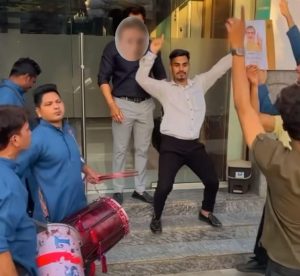Safeguarding Children from Online Sexual Abuse
By Vaishali Bhagwat, Advocate
Pune : Every child having access to a smart phone or laptop and social media is a potential victim of online sexual abuse. Perpetrators defy age and geographical borders and have unregulated access possible for any child in any corner of the world. Children and young people face the risk of being exposed to abusive images, of being groomed or lured into sexual conversation or exploitation by adult offender or of being bullied or harassed online. It is a scientific fact, that rehabilitation of a child sex offender is almost impossible and that he or she will repeat the act of abuse at the earliest opportunity. Governments across world have a zero tolerance policy to child sex abuse and have to do their best to co-operate in case of cross border offences. The child sex offender could be already in your home, just a click away, no matter wherever you are living on this globe.
The Associated Chambers of Commerce & Industry of India (ASSOCHAM) conducted a survey in 2014 in metropolitan cities (8-13 years) wherein 73% minors where found to be facebook users despite of the age-restriction of 13 years. McAfee Tweens, Teens & Technology Study (2014) was conducted across metro cities in India (8-17 years) wherein it was found that 61% of youth think that their parents can't keep up with them when it comes to technology. To add more, 64% of young people still manage to hide their online behaviours from their parents and 62% would still change their online behaviour if they knew their parents were watching. Moreover, 52% children shared that, their parents simply don’t care about online activity.
Are these statistics alarming ? Or is it ok to let our children use the internet without any supervision , intervention or control ? Are our children safe online ? Are we aware of the threats or risks our children get exposed when they are online ? Or is it just one more thing that we as parents have no control over !
Threats and risks our children face online can be summarized in 3 C’s. Content, Contact and Conduct
Content risks: The child or young person is exposed to harmful material, where the child is only a recipient. Content risks arises out of harmful material such as illegal content, harmful content or harmful advise. For eg: sexual content, child abuse images, racist content, pro-suicidal sites and inaccurate or misleading content
Contact risks: The child or young person participates perhaps unknowingly or unwittingly in adult initiated online activity; Contact risks can be Cyber grooming, online harassment, cyber bullying, illegal interactions, problematic content sharing or threatening or intimidating communication.
Conduct risks: The child or young person is a perpetrator or victim in peer-to- peer exchange;Conduct risks are when the child engages in hostile peer actitvity, cyber bullying ,flaming or trolling, sexual harassment or creating and uploading inappropriate content.
Online behavior of children exposes them to these risks such as over-sharing. Many children share details such as address, contact details and private information online with unknown people (virtual friends). Moreover, children also share their personal photos or videos on social networking sites like Facebook, Twitter, Instagram etc. without paying heed at the privacy settings. McAfee Study state that; 92% children have posted something risky online. 70% children have posted their personal information like e-mail address, contact number or home address 55% tweens and teens believe Online Identity theft does not apply to them. 51% claimed that they do not care about privacy settings.
The same study results came up with the fact that 53% children have met someone in person who was met online. This shows that kids may not realize the fact that, connecting to unknown people online has high risks, as people may create a fake profile and pretend something different than who they are. Can you remember the famous cartoon with the slogan “On the internet, nobody knows you are a dog!” by Peter Steiner in 1993 in “The New Yorker”? It is still relevant !
Children also are likely to easily fall prey to those popups where you get a message like “you have won $100000”, “Win a Lap-top. Click here.” etc. while they are playing games or surfing online. Moreover, they may also respond to the mails wherein they have been told to win a lucky draw and there are chances that kids provide the personal information that is asked. Another financial pitfall is online gambling which is prohibited by the law in India. Additionally, they may fall prey risks related online shopping from fake sites.
A study by Microsoft (2012) on online bullying in the age-group 8-18 years revealed that 53% children have been subjected activities which can be considered online bullying. On the similar lines, McAfee Study reports 50% youth being cyber-bullied online.
Internet dependence is another major factor exposing children to cyber risks. McAfee Study which reports 70% spend more than 5 hours on the Internet daily. The National Institute of Mental and Neurosciences (NIMHANS) Bangalore study (2014) reports that 73% of teenagers in urban India are affected by “psychiatric distress” and overuse of technology has been cited as one of the major reasons.
So what can we do ?
Some Suggestions :
Monitor children’s internet screen time (time spent on variety of gadgets for the Internet)
Decide rules regarding number of hours, acceptable sites, taking permissions etc.
Use locks and passwords for your phone, i-pads so that children can access them only when you want them to and when you can monitor them.
Monitor children’s access to internet- websites, social networking sites etc.
Learn the trends of social networking and the privacy settings of respective sites.
Parental controls like software, applications may be used as well.
Use appropriate anti-virus software and use filtering settings, so that unwanted material would not pop-up when child is using the device.
Teach kids about online safety- Have discussions, show resources and make clear rules about online presence
Talk to kids about online threats like cyber-bullying, Cyber-stalking, online abuse etc. in childfriendly and age-appropriate manner and teach them how to be safe.
For more detailed information on Keeping Children Safe Online please attend the one day awareness program organized by Rotary District 3131 . Delivered by experts from the field of law , technology , law enforcement and child protection agencies, the Program is meant for Teachers , Parents , lawyers , police officers , school counselors , care givers and all those having access to children.
Date : 16thJuly 2016
Time : 8:30 to 5:00 pm
Venue : Dewang Mehta Auditorium , “Bhageerath” , Persistent Systems Ltd., Off Senapati Bapat Road , Pune
Registration charges : Rs 200/- includes breakfast , lunch , kit(CD + booklet) and participation certificate
For Registrations contact ;
PP Vrunda Walimbe +91 9822558972
Rtn.Dr Shefali Agarwal +91 9552558112
Rtn Maithili Manakawad +91 9890214896
020 25511816
Or visit the website www.childsafetyonline.org
Or register on https://sites.google.com/site/onlinechildabusesafetymeasures/
You may deposit Rs 200/- in the following bank account
Name of a/c – Rotary Pune Pride Foundation
A/c no 6009 686 1857
Type – savings
Bank – Bank of Maharashtra,Erandwane
Branch code 00330
IFSC code MAHB0000330
Address – 79/3,Dr. Ketkar Marg, Kamala Nehru Park, Erandwane, PUNE 411004
(The author is a practicing lawyer and an expert on cyber laws . She can be contacted on [email protected])





